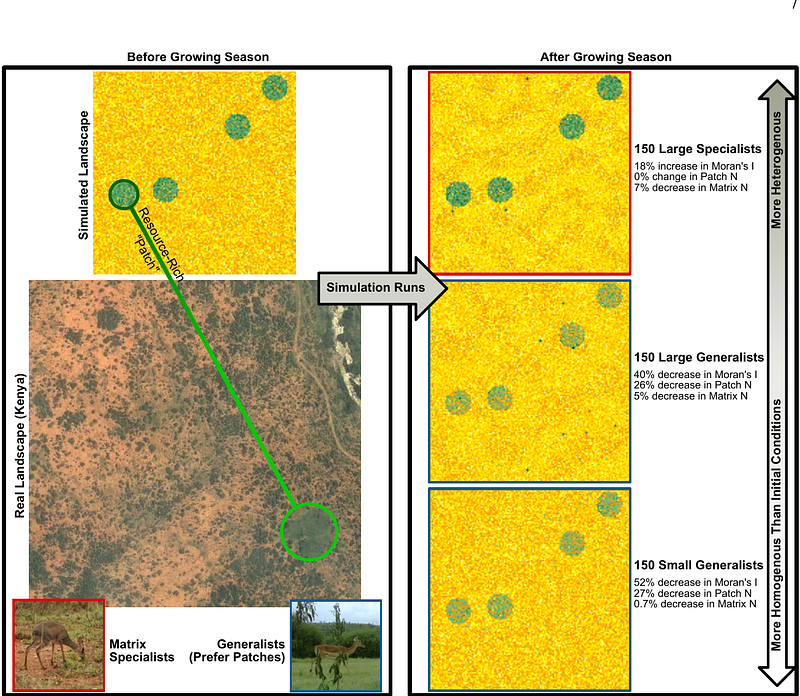Spatial fingerprint of consumer body size and habitat preference on resource distribution

Spatial fingerprint of consumer body size and habitat preference on resource distribution
Little, C. J.; Banville, P. E.; Ford, A. T.; Germain, R. M.
AbstractConsumers shape spatial patterns on landscapes by amplifying or dampening environmental heterogeneity through feeding, excretion, and movement of resources. The degree to which the environment is modified by consumers depends on species\' traits, including body mass, movement behavior, sociality, and habitat specialization. Global change is altering the size and traits of consumer populations, but our understanding of how this may impact resource heterogeneity is limited. Here, we developed an individual-based model of habitat specialists\' and generalists\' movement and activity in a patchy landscape and investigated the impact of changes in population and mean body sizes on landscape-scale resource heterogeneity. We found that consumers specializing on low-resource habitats (a common risk avoidance strategy) increased spatial resource heterogeneity regardless of their population and body size. By contrast, generalists eroded differences among habitats, and we further found that resource heterogeneity decreased with the average body size of generalist consumers, even while controlling for total consumer biomass. These nuanced spatial outcomes of consumer-resource interactions emerge from the unique metabolic demands of specialists vs. generalists, which scale nonlinearly with body size. Since global change disproportionately impacts larger species and specialists, indirect consequences on ecosystems may arise via biotic processes, affecting spatial heterogeneity of future landscapes.


